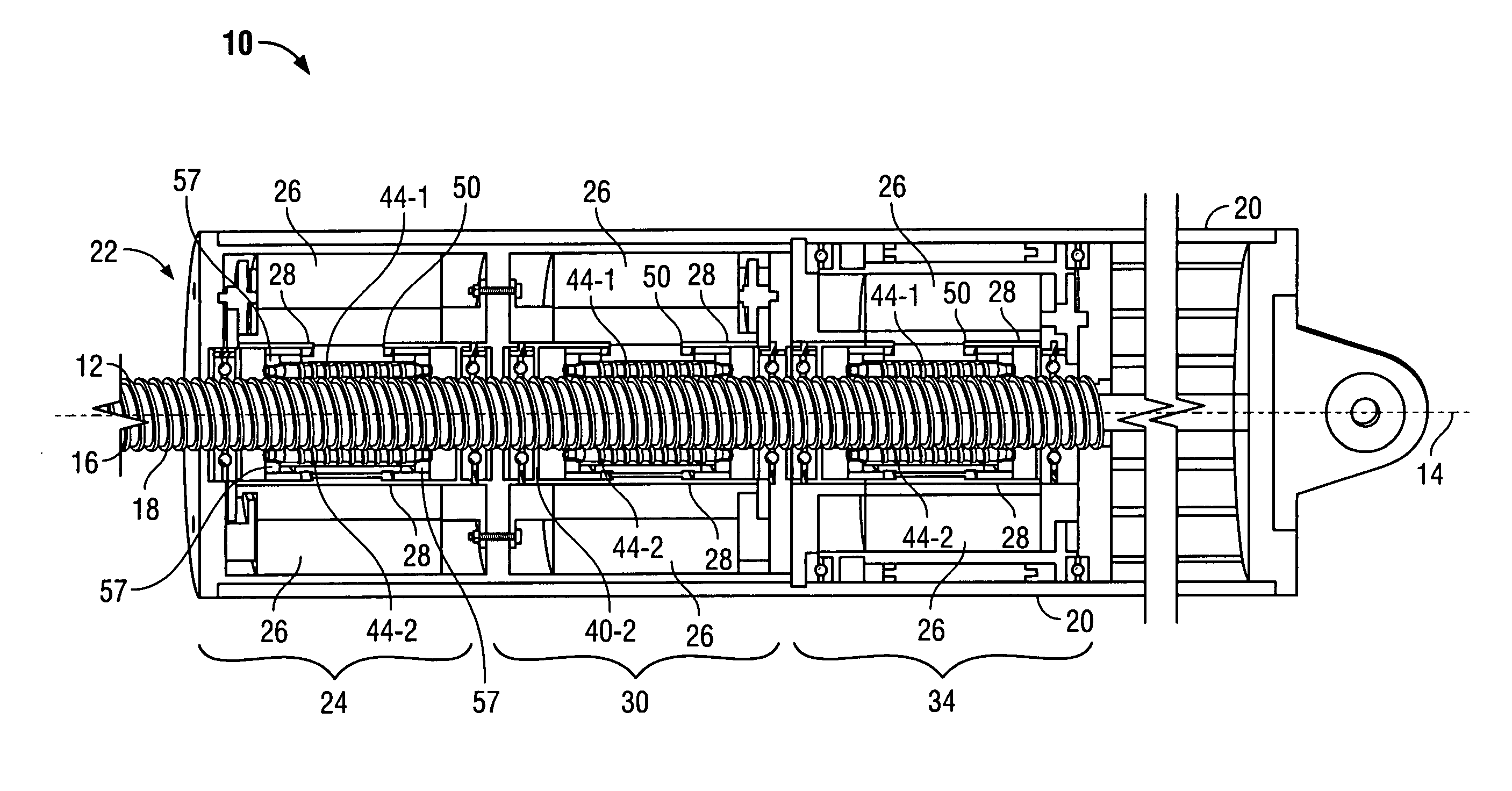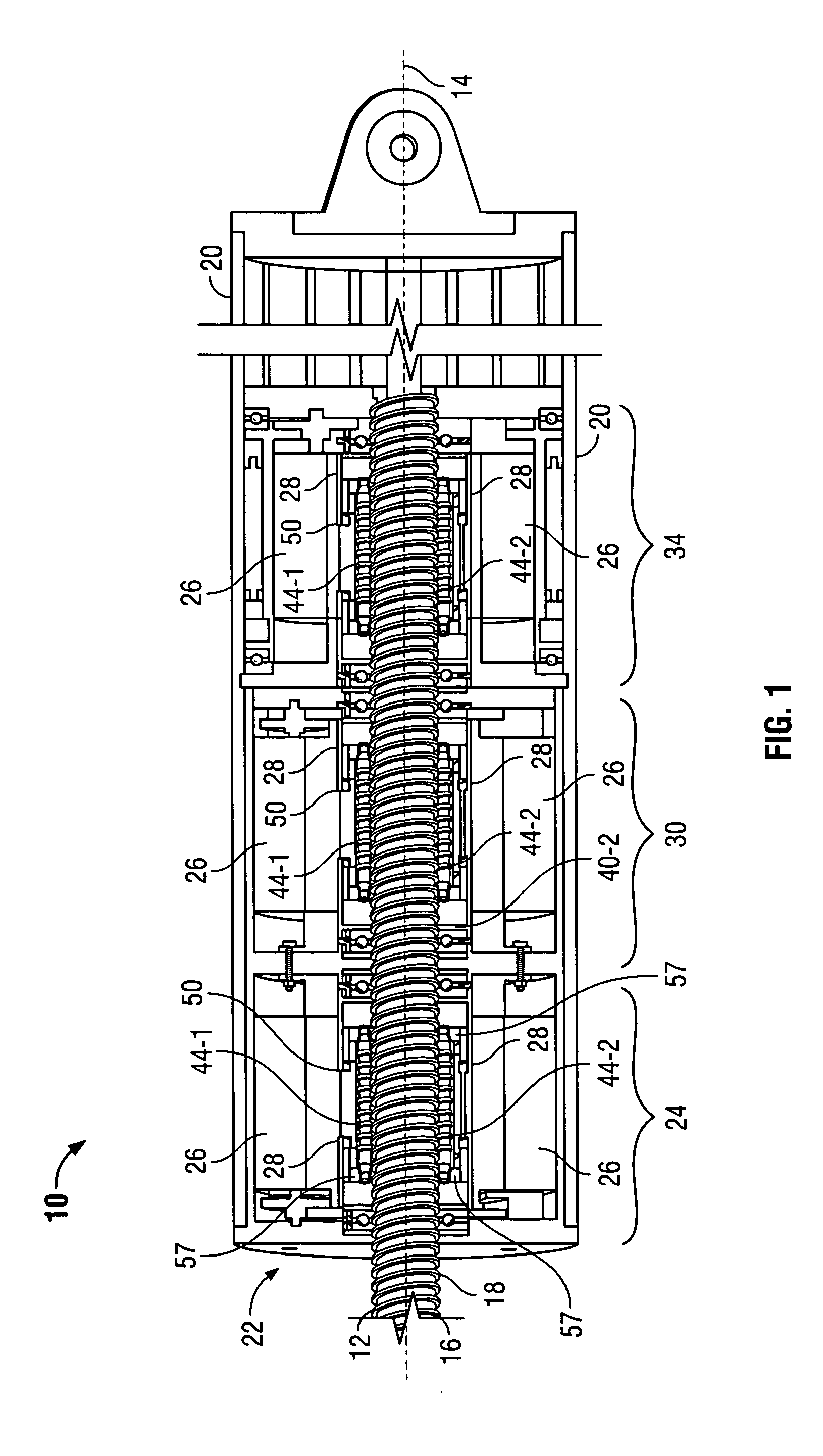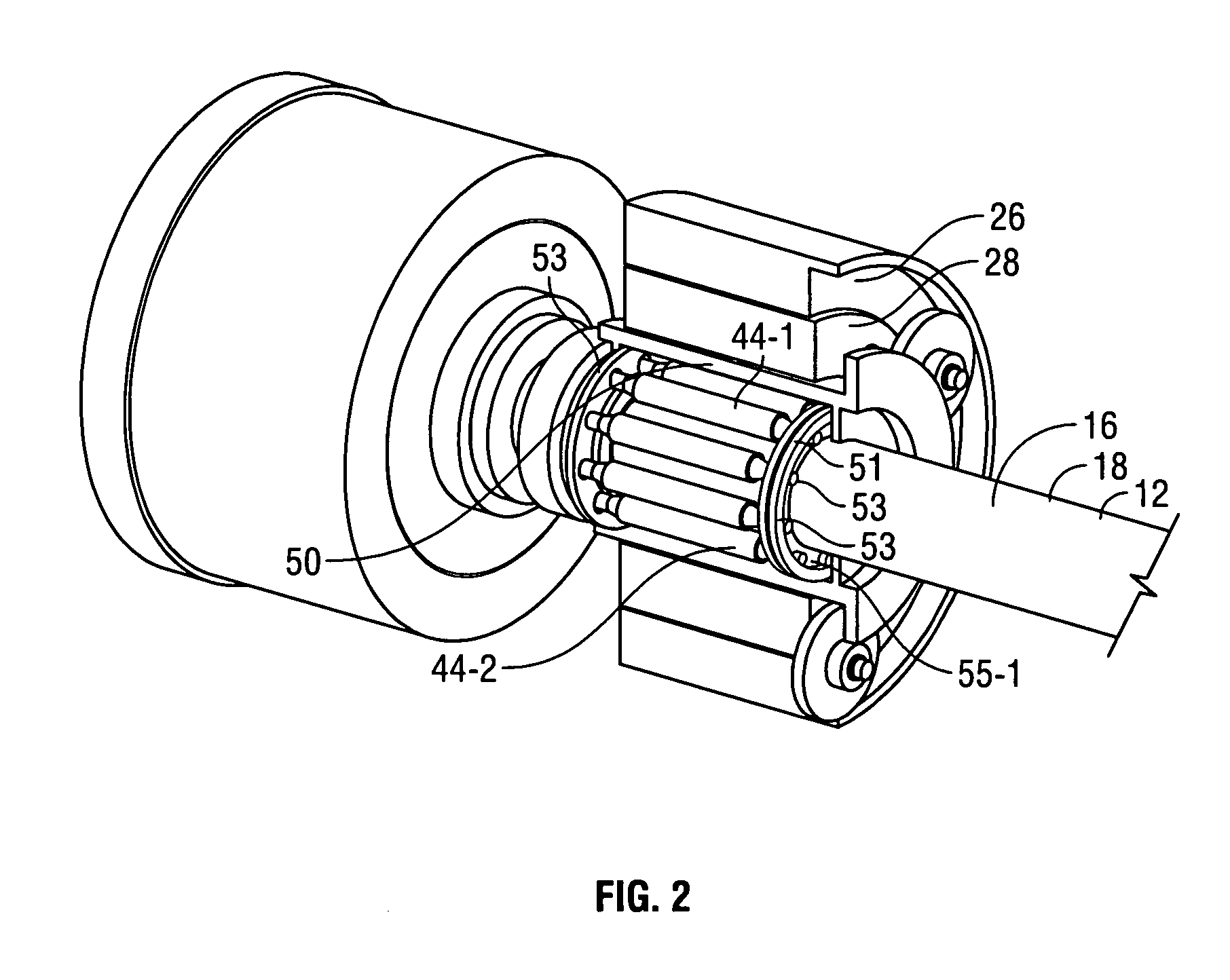High-reliability electro-mechanical actuator
a high-reliability, electro-mechanical actuator technology, applied in the direction of lifting equipment, gearing, transportation and packaging, etc., can solve the problems of increasing design complexity, adding weight, and requiring a lot of ply to distribute and control the pressurized working fluid
- Summary
- Abstract
- Description
- Claims
- Application Information
AI Technical Summary
Benefits of technology
Problems solved by technology
Method used
Image
Examples
Embodiment Construction
[0018]FIG. 1 is a cross-sectional view of a preferred embodiment of an electrically-powered and fault tolerant electrical actuator 10.
[0019] Briefly, the actuator 10, is comprised of cylindrically-shaped housing 20 that encloses two or more integrated electrical motor modules (three shown) 24, 30 and 34 that can drive an output ram 12, the exterior surface 16 of which is helically threaded. A helical thread 18 (also referred to as “threads”) on the output ram 12 surface are threaded into one or more complementary “drive nuts” within the housing that engage the threaded output ram 12 and which can rotate about the output ram 12 but which are laterally fixed in the housing, i.e., they cannot move along the length of the output ram 12. When the end of the output ram (not shown in FIG. 1) is connected to a machine, such as an aircraft's control surface, lateral movement motion of the ram 12 operates or controls the machine to which the output ram 12 is coupled.
[0020] The output ram 12...
PUM
 Login to View More
Login to View More Abstract
Description
Claims
Application Information
 Login to View More
Login to View More - R&D
- Intellectual Property
- Life Sciences
- Materials
- Tech Scout
- Unparalleled Data Quality
- Higher Quality Content
- 60% Fewer Hallucinations
Browse by: Latest US Patents, China's latest patents, Technical Efficacy Thesaurus, Application Domain, Technology Topic, Popular Technical Reports.
© 2025 PatSnap. All rights reserved.Legal|Privacy policy|Modern Slavery Act Transparency Statement|Sitemap|About US| Contact US: help@patsnap.com



